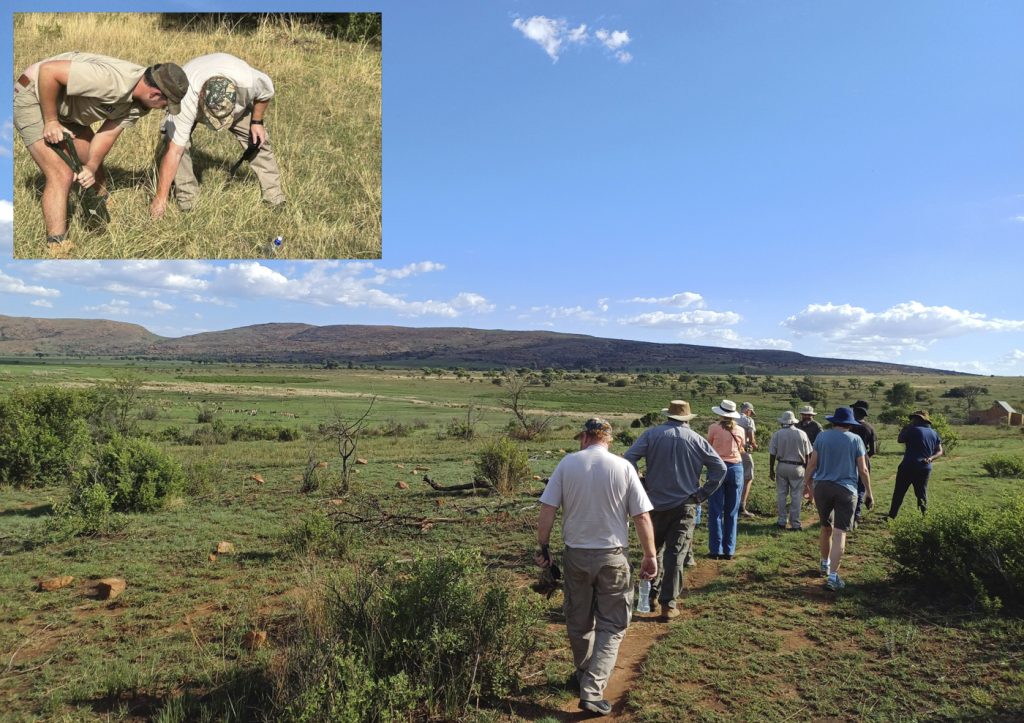Web report by Ian Nortje (Team Grasslands)
We started on Friday afternoon when everybody came into camp and pitched their tents. When we finished with our tents, there was a dead silence in the camp. Everybody was trying to get the last bit of information on amphibians and reptiles in their heads for the test later in the afternoon. After the test, we sat around a nice campfire, enjoying some social time before heading off to bed.
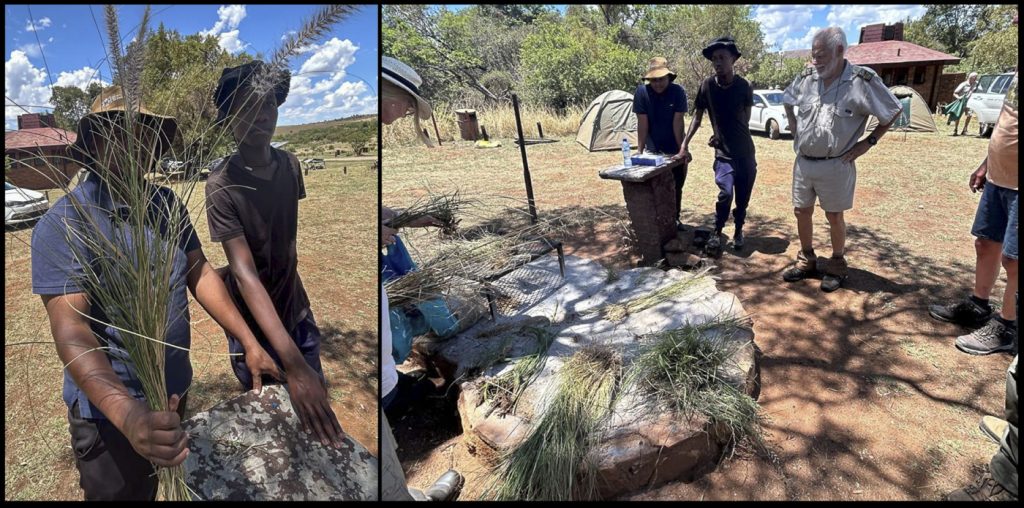
On Saturday, we had an early morning start learning about the various parts of grasses and how to identify the different species presented to us by Hennie De Beer. We went through the different types of inflorescences and spikelets to understand the basics of identifying grasses using a grass key. After our crash course on identifying grasses, we went out to collect some samples. However, this was a task on its own because about 70% of Kgaswane burnt a while ago, and the grasses did not have sufficient time to grow back. But we did eventually find a good spot for collecting. After we collected enough samples, we headed back to camp for identification. We separated into three different groups to start with the identification process. After each group identified about three samples, we had a lunch break to fill our stomachs for the next session.
During the lunch break, Bevan Richards called two of our younger men to help him put in the new custom baboon-proof trash bins. Kgaswane will be the proof-run for this new kind of trash bin and will be observed for some time.
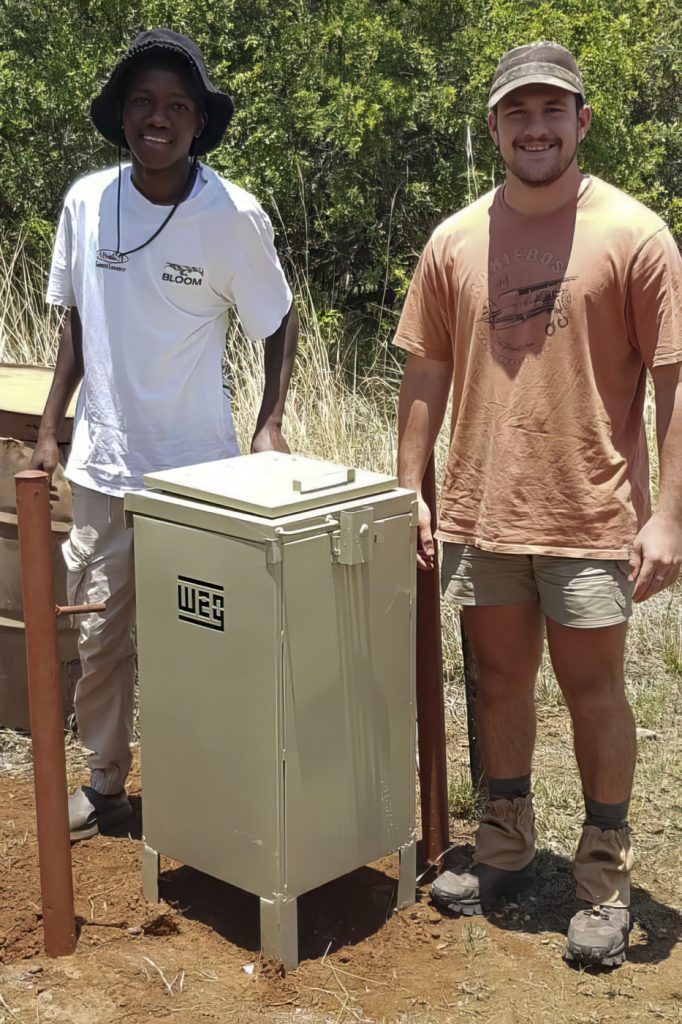
Halfway through our lunch break, it started to pour down with rain. Some of us hid in tents, and some sought shelter in the kitchen. When the rain stopped, everybody went to see if their tents had survived. Unfortunately, Madie’s tent turned into a swimming pool, and Jan also had some water coming in! Luckily, after the rain stopped, the sun came out, and everybody could dry out their wet belongings. After all the excitement from lunchtime, it was time to head back for the second half of presentations. Jan got so excited to learn more about grasses that he threw his grass field guide into a water-filled basin.
For the second half of our class, we looked at ecosystem drivers, the evolution of plants, the importance of grasses, the value that grasses have to man and grazers, the role of fire and the importance of grasses for soil conservation. After learning about the importance of grasses, we headed out to collect more samples.
We walked a little trail from the campsite, taking in the beauty of the lush green landscape and the numerous animals on the plains below us. Fortunately, we were able to find some more grass species to identify. Thanks to Sam, Peter and Hennie who were close at hand to assist in the grass identification. On the way back to camp, we first had to cross a sketchy bridge, but we all made it back safely.
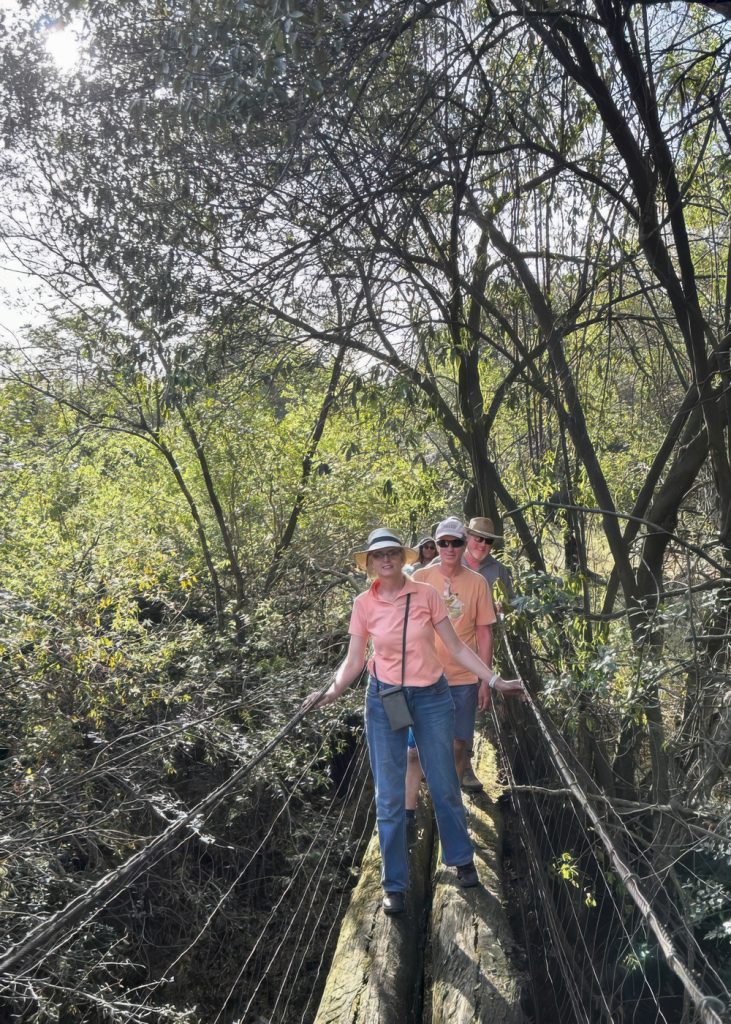
After identifying some more grasses, we headed for a nice sunset at the waterfall.
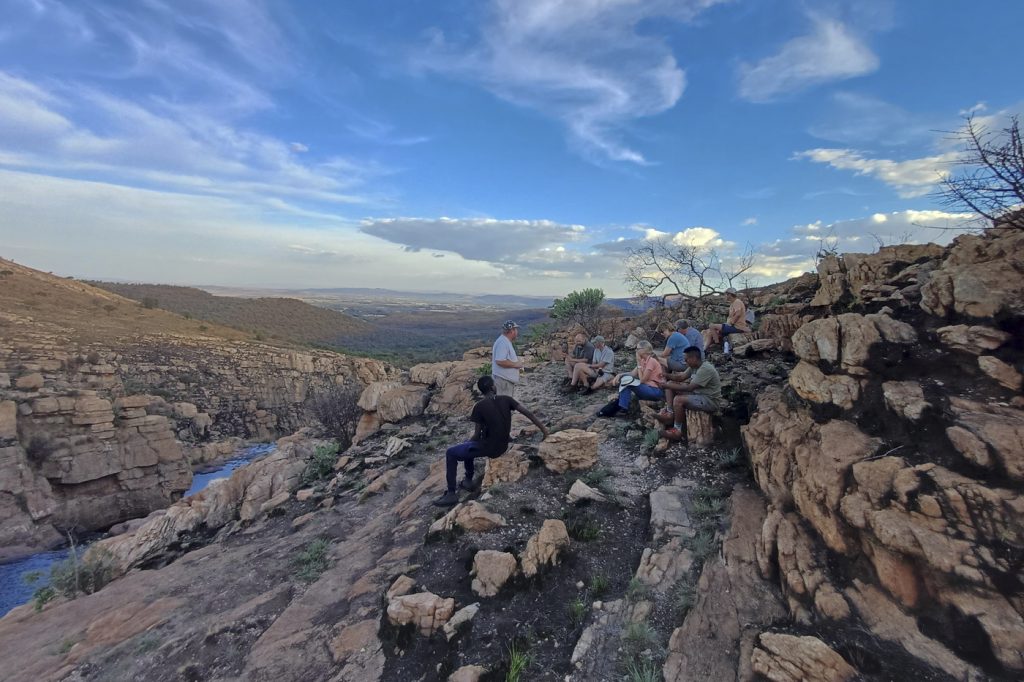
We had an early morning walk on the Peglerae walking trail on Sunday. On the trail, we had some great views of Rustenburg and the wetland inside Kgaswane. On the trail, we found more grass species to identify and learned about other plants (including underground trees) and birds. After completing our 5km walk, we had time to identify the last grasses we had collected. When we were done with the identification, and everybody felt comfortable identifying grasses, Hennie discussed the pros and cons of using the grasses app versus an old-fashioned book.
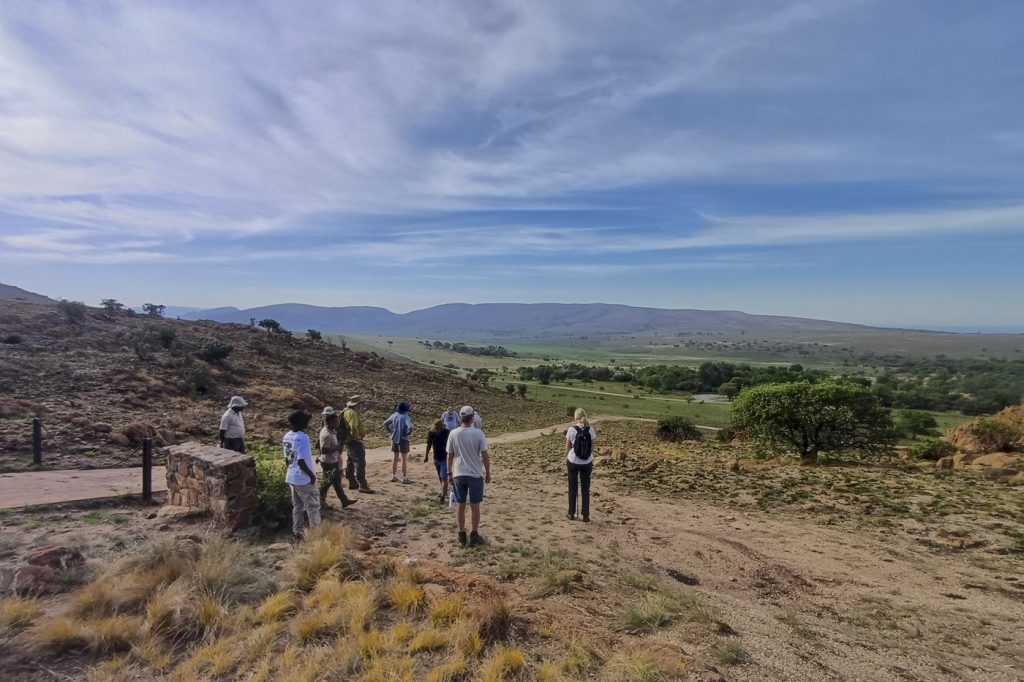
Then, to wrap up the grasses weekend, we had a little grasses “Pub” quiz. After these fun but unusual questions, we thanked Hennie for his time and amazing knowledge of grasses and had to pack up our tents and say goodbye till the next weekend.
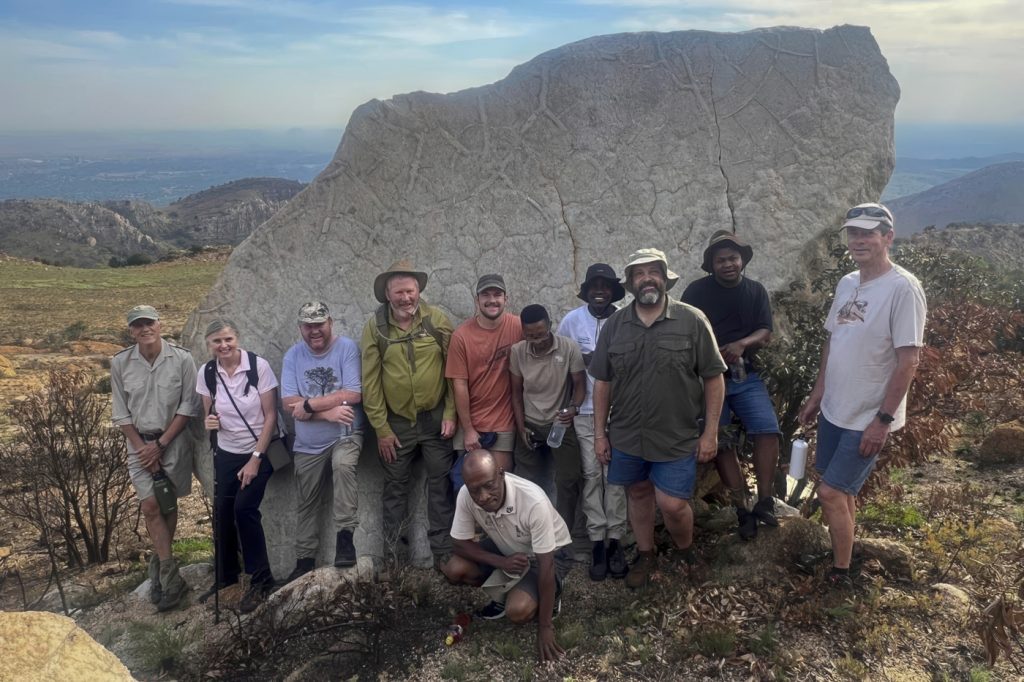
EDITORS NOTE: Thanks so much to student Ian for expanding on what was unquestionably a challenging weekend for grass ID’ing at Kgaswane.
